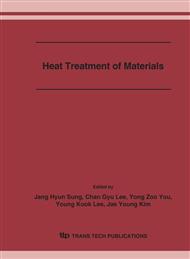p.515
p.521
p.527
p.535
p.541
p.549
p.555
p.561
p.565
Manufacturing and Plasma Electrolytic Oxide Coatings on the Thin-Wall Aluminum Notebook PC Case
Abstract:
The silicon-based aluminum casting alloy and 2 different types of gate designs were used to investigate experimentally the fabrication feasibility of sound thin-wall case casting by diecasting process. While split type gate design had no defect, tangential type gate design resulted in cracks in the all obtained specimens. Electrolytic Oxide (PEO) coating was performed as a surface treatment process. Before the PEO coating treatments some die cast specimens were heat treated at the temperature of 323K and N2 atmosphere for 1hr to evaluate the effect of heat treatment. The result showed that hardness was improved after PEO coating, however, the effect of heat treatment was not significant.
Info:
Periodical:
Pages:
541-548
Citation:
Online since:
December 2006
Keywords:
Price:
Сopyright:
© 2006 Trans Tech Publications Ltd. All Rights Reserved
Share:
Citation:


